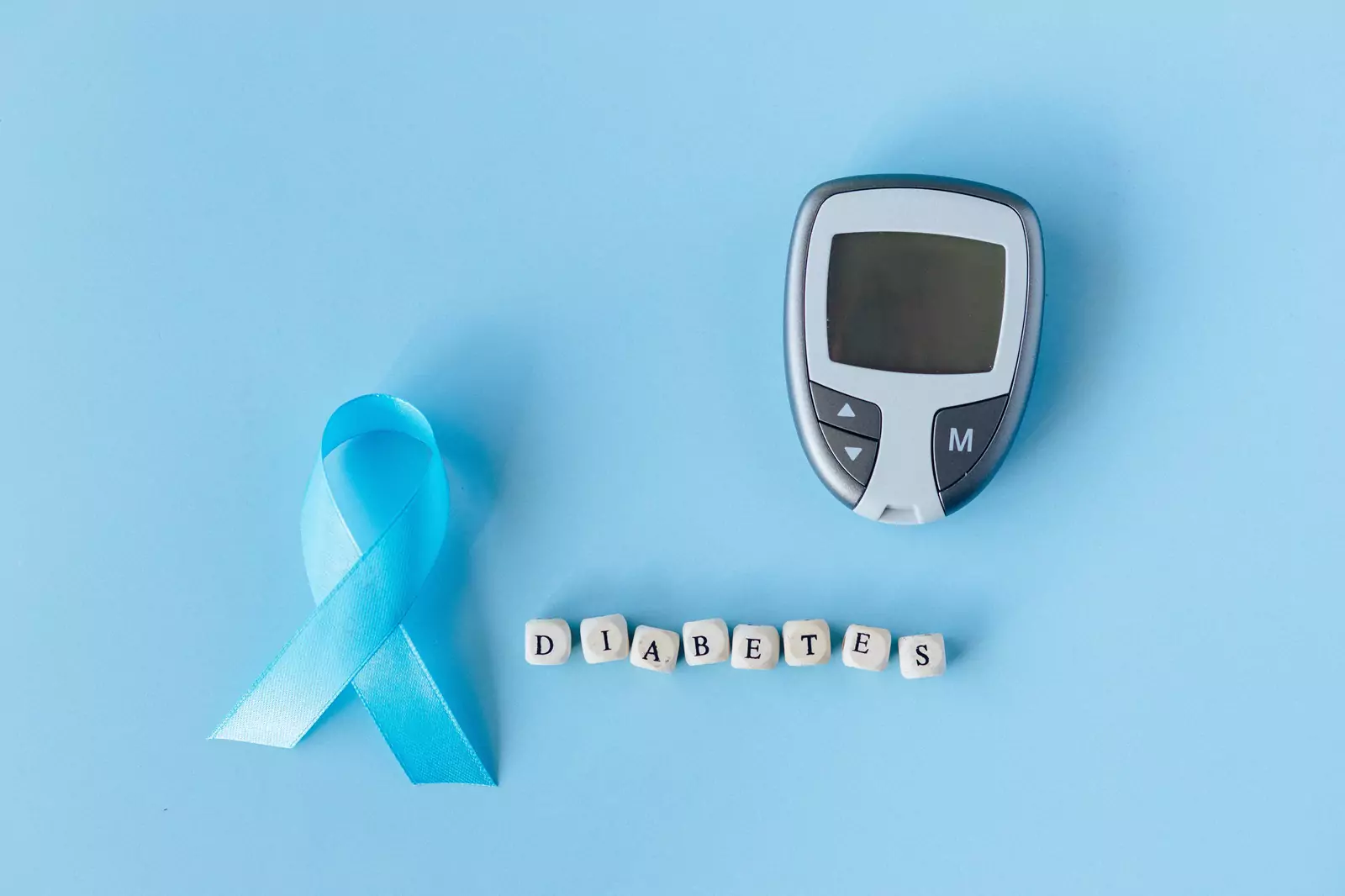





Important Facts to Know About Diabetes in Men


Table of Contents
- What is Diabetes?
- Risk Factors For Diabetes in Men
- Symptoms of Diabetes in Men
- Warning Signs for Diabetes in Men
- Type 1 Diabetes Vs. Type 2 warning signs
- Screening Options for Diabetes
- Diabetes Treatment for Men
- SugarMD Advance Glucose Support
- How does Diabetes affect women and men differently?
- Prevention of Diabetes in Men
- Conclusion
- About The Author
Diabetes is a serious condition that affects an estimated 34.2 million Americans. While it is important for everyone to be aware of the signs and risks associated with diabetes, it is particularly important for men to understand the unique risks they face in developing the condition.
In this article, we’ll explore the different risk factors, warning signs, and screenings available to help men identify and treat diabetes. Additionally, we’ll discuss the unique ways diabetes affects men and women differently and how to prevent the condition. With this information, men can take the necessary steps to protect their health and stay informed about this serious condition.
What is Diabetes?
Diabetes is a chronic health condition that affects millions of men around the world. It is a condition in which the body cannot properly regulate its blood sugar levels, leading to an array of health problems. Diabetes can be divided into two main forms: type 1 diabetes which is an autoimmune disorder and type 2 diabetes which is typically caused by lifestyle factors such as poor diet and lack of exercise.
Despite being a relatively common condition there is still a great deal of confusion and misunderstanding surrounding diabetes and its diagnosis, treatment, and prevention. Knowing the key facts about diabetes and how it affects men is essential for those who have been diagnosed with the condition as well as for those who are at risk of developing it.
The signs of diabetes in men can vary but some of the most common include frequent urination, excessive thirst, fatigue, blurred vision, and slow-healing wounds. However, the most common sign of diabetes is elevated blood sugar levels. If you have any of these symptoms, it is important to speak to your doctor as soon as possible in order to ensure proper treatment.
Early diagnosis and treatment of diabetes are essential in order to lessen the impact of the condition and prevent long-term complications. Treatment typically involves lifestyle changes such as adjusting your diet and increasing physical activity as well as taking medications to help regulate blood sugar levels. It is also important to understand the various risk factors associated with diabetes such as obesity, high blood pressure, family history, and age.
By understanding the risk factors and taking preventative action, you can help reduce your risk of developing the condition. By learning more about diabetes and its symptoms as well as taking appropriate steps to prevent and manage it, you can help ensure that you remain healthy and active for many years to come.
Risk Factors For Diabetes in Men
When it comes to understanding the risks of developing diabetes there are certain factors that tend to be common in men. Knowing the signs of diabetes in men can help improve awareness and prevention of the condition.
Age: Age is one of the greatest risk factors, with the risk of diabetes in men increasing with age. Men who are 45 and older are generally at a significantly higher risk of developing diabetes.
Family History: Family history of diabetes is another risk factor as men are more likely to have a parent, grandparent, or sibling that has diabetes.
Obesity: Being overweight is another risk factor for diabetes as it is a leading cause of Type 2 diabetes. Men who have a body mass index (BMI) over 25 are at a much higher risk for the condition.
Lack of exercise: Men who lead a physically inactive lifestyle or don’t exercise regularly are at an increased risk for Type 2 diabetes due to their sedentary habits.
Certain Medical Conditions: Certain medical conditions such as kidney disease, high blood pressure, and high cholesterol can all increase the risk for diabetes in men.
Other Risk Factors: Other risk factors to be aware of include smoking, sleep apnea, and depression. All of these can increase the risk of developing diabetes in men. By understanding the risk factors for diabetes in men and the signs of diabetes in men, it is possible to take the necessary steps toward preventing and managing the condition.
Keeping a healthy diet and lifestyle, monitoring sugar levels regularly, and fully understanding the risks are all important to minimizing the risk of diabetes.
Symptoms of Diabetes in Men
It is important to recognize the signs of diabetes in men so that the condition can be properly diagnosed and managed. Symptoms of diabetes in men can vary from mild to severe and can include:
• Increased thirst and frequent urination: Men who often feel thirsty and find themselves urinating more often than normal may be suffering from diabetes. This can indicate that the body is unable to absorb glucose properly.
• Weight loss: Unintentional and rapid weight loss may be a sign of diabetes in men. This can occur due to the body's inability to properly metabolize glucose.
• Fatigue and weakness: Men who experience sudden and unexplained fatigue and weakness may be suffering from diabetes. This can be caused by the body's inability to convert glucose into energy.
• Blurred vision: Abnormal changes in vision can be a sign of diabetes in men. High blood glucose levels can damage the blood vessels in the eyes, resulting in blurred vision.
• Slow-healing wounds: Diabetes can impair the body's ability to heal wounds and fight off infections. This can result in slow healing of cuts and other wounds.
• Numbness and tingling in the hands and feet: Diabetes can damage the nerves in the hands and feet, resulting in numbness and tingling.
• Darkening of the skin: Dark patches of skin, called acanthosis nigricans, may indicate diabetes in men. These patches most often appear in the neck, armpits, and groin area. If you experience any of the above symptoms of diabetes in men, it is important to seek medical attention as soon as possible for proper diagnosis and treatment. Early diagnosis and treatment of diabetes can help prevent serious and long-term health complications.
Warning Signs for Diabetes in Men
Knowing the warning signs and symptoms of diabetes in men is essential for early diagnosis and treatment. Additionally, certain lifestyle changes can help to prevent or delay the onset of diabetes. The most common warning signs of diabetes in men include increased thirst and hunger, unexplained weight loss, and frequent urination.
Increased thirst and hunger can cause men to drink and eat more frequently and in larger quantities than they are used to. Unexplained weight loss can be the result of the body trying to rid itself of excess glucose through urination and frequent urination can be caused by the body's attempt to rid itself of excess glucose.
Other warning signs for diabetes in men include fatigue, blurred vision, tingling or numbness in the hands or feet, slow healing of wounds, and frequent infections. Fatigue can be the result of the body's inability to use glucose for energy and can also be due to stress caused by managing diabetes.
Blurred vision is caused by high blood sugar levels and can range from minor to severe. Tingling or numbness in the hands or feet is caused by nerve damage which can be caused by high blood sugar levels. Slow healing of wounds is caused by the decreased blood circulation resulting from diabetes while frequent infections are caused by the weakened immune system resulting from diabetes.
If these warning signs are ignored, men can be at risk of developing more serious complications. These include kidney damage, nerve damage, heart attack, stroke, and blindness.
Additionally, diabetes can affect circulation and can lead to the development of blood clots which can cause serious damage to the body. It is important for men to be aware of the warning signs of diabetes and to make sure that lifestyle changes are made to help prevent or delay the onset of diabetes.
Making small changes such as eating a balanced diet, exercising regularly, quitting smoking, and losing excess weight can have a significant positive impact on overall health. Additionally, it is important for men to make regular visits to the doctor for check-ups, even if they have no signs or symptoms of diabetes.
Type 1 Diabetes Vs. Type 2 warning signs
Type 1 diabetes occurs when the pancreas produces little or no insulin. This condition is commonly diagnosed in childhood and occurs when the body’s own immune system mistakenly attacks the pancreas and destroys the cells that produce insulin. Warning signs of type 1 diabetes in men include excessive thirst, frequent urination, extreme hunger, blurry vision, sudden weight loss, and fatigue.
Type 2 diabetes occurs when the body either can’t produce enough insulin or doesn’t use the insulin properly. Instead of attacking the pancreas, it affects how the body responds to insulin.
Warning signs for type 2 diabetes in men include the same symptoms as type 1 as well as dark patches on the skin, frequent infections, slow healing sores, and numbness or tingling in the hands and feet.
Although both types of diabetes can be dangerous and require treatment, men can take a proactive role in preventing and managing the condition.
Making healthier lifestyle choices such as eating a balanced diet, exercising regularly, losing extra weight, and keeping an eye out for warning signs can help maintain optimal health and avoid potential health complications down the road. It is important to also consult with a doctor if men notice any of the warning signs listed above as these signs could be an indicator of diabetes.
Screening Options for Diabetes
There are a variety of ways to screen for diabetes which can help identify warning signs and prevent further health complications. The most common screening test for diabetes is the fasting plasma glucose test which measures a person’s blood glucose level during a fast period of eight hours or more.
If a person’s fasting glucose is higher than normal they may need to undergo further testing to diagnose their condition.
Another common test is the A1C which measures a person’s average blood glucose over the past 3 months. Men who are at a higher risk for diabetes such as those who are overweight or have a family history of the condition, should consider being screened more frequently.
In addition to traditional screening methods, there are a variety of new technological advances in diabetes detection such as wearables and mobile apps. These tools provide real-time data and feedback that can help people with diabetes manage their condition more effectively. When it comes to diabetes, early detection is key. By being aware of the signs, symptoms, and available screenings, men can stay one step ahead of their condition and prevent further health risks.
Diabetes Treatment for Men
The best way to treat diabetes in men is to identify the signs of diabetes early and to take action as soon as possible. Once a diagnosis of diabetes is made the next step is to create a treatment plan. First and foremost, men with diabetes should make lifestyle changes to control their diabetes. This includes eating a balanced diet that is low in sugar, exercising regularly, and maintaining a healthy weight.
It is also important to keep blood sugar levels in check by monitoring them regularly and taking medications as prescribed. Properly managing diabetes through lifestyle modifications can help prevent or delay serious complications.
In addition to lifestyle changes, men with diabetes may need to take medications to help control their condition. There are a variety of medications available to treat diabetes in men, including insulin, sulfonylureas, meglitinides, thiazolidinediones, and dipeptidyl peptidase-4 inhibitors.
However, in type 1 diabetes the main drug of treatment is insulin which is taken subcutaneously for lifelong. These medications help to keep blood glucose levels in check and reduce the risk of developing diabetes complications. Finally, men with diabetes should consider working with a diabetes healthcare team.
This team consists of a primary care physician, an endocrinologist, a nurse educator, and a diabetes educator. This group can help to customize a treatment plan to fit the specific needs of the patient and can also provide support and education about self-care.
SugarMD Advance Glucose Support
Maintaining healthy blood sugar levels can be a challenge. From carby meals to snacks and even with all the effort, it’s still not enough. That’s where SugarMD Advanced Glucose Support comes in. Our blend of traditional Ayurvedic herbs helps regulate blood sugar levels, curbs cravings, supports weight loss, and boosts metabolism and energy.
Endorsed by endocrinologists, this unique formula of pure, potent herbs promotes overall blood sugar health. Ideal for both pre-diabetics and Type 2 diabetics. Diabetes can be a difficult condition to manage but the sooner treatment is started and lifestyle changes are made the better chance there is that serious complications can be avoided.
By understanding the signs of diabetes in men and working with diabetes healthcare to customize a treatment plan, men can better control their condition and enjoy a healthy life.
How does Diabetes affect women and men differently?
Diabetes is a serious and chronic health condition that affects millions of people around the world. As a chronic condition, diabetes is a long-term illness that can cause various health issues and necessitate lifestyle changes. Diabetes can affect both men and women differently and it is important for people to be familiar with the signs and symptoms of this serious health condition.
In general, diabetes affects men and women in similar ways. However, there are some signs and symptoms that are more common in men, including weight gain, frequent urination, and fatigue. Men are also slightly more likely to have severe cases of diabetes than women.
In addition, men are more likely to have type 2 diabetes while women have a higher prevalence of type 1 diabetes. Additionally, men may experience some unique symptoms when they have diabetes. For example, men may experience erectile dysfunction if they have diabetes.
Erectile dysfunction can be caused by a combination of factors, including poor circulation and nerve damage. Men with diabetes should be especially cautious about any issues related to their sexual health and should talk to their doctor about any concerns.
Men with diabetes are also more prone to certain complications, including neuropathy, an inability to sense a particular body part, and kidney failure. Men with diabetes should make sure to maintain a healthy lifestyle and follow the advice of their healthcare provider to minimize their risk of complications. When it comes to prevention and treatment, men and women with diabetes should do their best to maintain a healthy lifestyle.
Eating a balanced and healthy diet, exercising regularly, and getting regular screenings can all help to avoid or manage diabetes. In addition, men should talk to their doctor about the risks of diabetes and any potential treatments and medications available.
By understanding the signs of diabetes in men, we can take steps to prevent and manage the condition as well as reduce the risk of complications. Men should be aware of their risk factors and work with their healthcare provider to ensure they maintain a healthy lifestyle and follow the best course of treatment available.
Prevention of Diabetes in Men
The first step in the prevention of diabetes in men is to be aware of the risk factors. Some of the main risk factors for diabetes in men include being overweight or obese, having a family history of diabetes, having high cholesterol or triglyceride levels in the blood, or having a sedentary lifestyle.
Men should also be aware that their age, ethnicity, and even their race can increase their risk of developing diabetes. To prevent diabetes in men, it is important to make healthy lifestyle choices. Eating a healthy diet, exercising regularly, and maintaining a healthy weight are essential for reducing the risk of diabetes in men. Men should also try to limit their intake of saturated fat, refined carbohydrates, and added sugars which can raise blood sugar levels.
Regular check-ups with a primary care physician are also important to track blood sugar levels. Men should also know the signs of diabetes in order to take action if they exhibit any of the warning signs. The main signs of diabetes include increased thirst and frequent urination, feelings of fatigue, increased hunger, blurred vision, slow healing of wounds, and numbness or tingling in the hands or feet.
Taking action quickly if any of these symptoms are experienced is important for managing diabetes and preventing further health complications.
Conclusion
Admittedly, understanding diabetes can be overwhelming, especially when there are so many variables that can make the risks higher or lower. But by maintaining a healthy diet and lifestyle, men can help reduce the chances of developing diabetes. Ultimately the key is to be knowledgeable about the risks and to actively work to lower them.
Men who feel they might be at risk should schedule an appointment with their doctor to discuss their risk factors, get tested, and/or discuss potential treatments. Early detection and treatment are both essential tools in helping to prevent the progression of diabetes and its potential side effects.
About The Author
Meet Dr. Ahmet Ergin, a highly skilled and dedicated endocrinologist with a passion for diabetes care. Dr. Ergin's journey in the medical field began with earning his medical degree with honors from Marmara University School of Medicine in Istanbul, Turkey.
He then went on to complete his internal medicine residency and endocrinology fellowship at Cleveland Clinic, one of the top medical centers in the United States, located in Cleveland, Ohio. With a wealth of knowledge and experience in his field, Dr. Ergin is board-certified in Internal Medicine, Endocrinology, Diabetes, and Metabolism, making him a respected and highly qualified physician.
He is also a certified diabetes education specialist, the author of the book "The Ultimate Diabetes Book" and the founder of the SugarMD YouTube channel where he shares valuable insights and information on diabetes management and care. Currently, Dr. Ergin practices in Port Saint Lucie, FL where he provides exceptional care to his patients and helps them to effectively manage their diabetes.
It is important to note that the information on diseases and treatments provided on this website is for general guidance only and should never be considered a substitute for the advice provided by a qualified healthcare professional. Always seek the advice of your physician, health provider, or other qualified healthcare professional with any questions you may have regarding your health.
Written By Dr. Ahmet Ergin
462 total articles
Meet Dr. Ahmet Ergin, a highly skilled and dedicated endocrinologist with a passion for diabetes care. Dr. Ergin earned his medical degree with honors from Marmara University in Istanbul. He completed internal medicine residency and endocrinology fellowship at Cleveland Clinic. Dr. Ergin is board-certified in Internal Medicine, Endocrinology, Diabetes, and Metabolism due to his vast medical expertise. He's a certified diabetes educator, author of “The Ultimate Diabetes Book,” and founder of “the SugarMD YouTube channel.” Dr. Ergin offers exceptional diabetes care to his patients in Port Saint Lucie, FL, helping them manage effectively. For a closer look into his insights and experiences, connect with Dr. Ahmet Ergin on LinkedIn, Instagram, and YouTube.”
Disclaimer: These statements have not been evaluated by the Food and Drug Administration. Information on this website isn't intended to treat, cure or prevent any disease. Discuss with your doctor and do not self-treat.
Products











